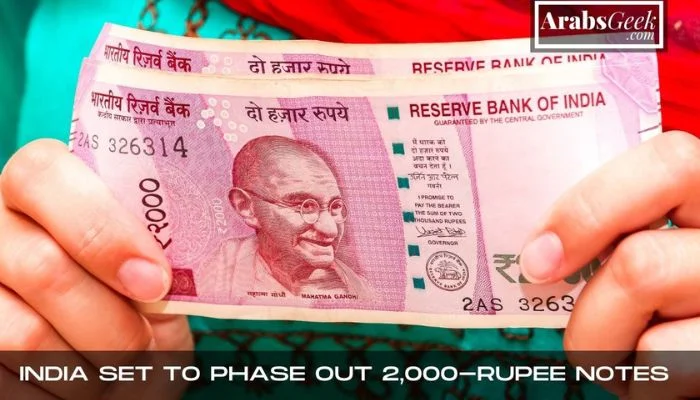India Plans to Retract 2,000-Rupee Notes, Boosting Bank Deposits. MUMBAI, May 19 (Reuters) – The Indian Central Bank announced plans to begin phasing out its highest denomination currency notes, an initiative that could potentially stimulate an increase in bank deposits amidst a period of considerable credit growth.
The decision to remove the 2,000-rupee notes, equivalent to $24.5, has been assured by T.V Somanathan, the top official at the finance ministry, to pose no significant disruptions to regular life or the national economy. This decision is timely with the forthcoming elections in four major states later this year and a countrywide vote in spring 2024. It is common practice for political parties in India to amass funds in large currency bills to manage election expenditures, evading the strict spending regulations set by the Election Commission.
The Reserve Bank of India (RBI) justified the removal of these notes, stating the denomination is seldom used in everyday transactions.
For any business enquiry, you can contact us at ArabsGeek.com
For more of such financial articles, Consider visiting our sister website at EntrepreneursPilot.com
While the notes will still be considered legal tender, the public is urged to deposit and exchange them for smaller denominations by the end of September. The RBI ensured in a statement that the existing supply of other banknote denominations is sufficient to satisfy the public’s currency needs.
The introduction of the 2,000 rupee note in 2016 was a response to the government, led by Narendra Modi, suddenly removing the 500 and 1,000 rupee notes in an attempt to purge counterfeits from circulation.
Though there’s scarce proof that this strategy was successful, it resulted in a severe cash deficiency by eradicating 86% of the economy’s circulating currency value instantaneously.
Following the cash crisis, the government promptly issued new 500 rupee notes and added the 2,000 note to rapidly restore the circulation. Since then, the RBI has concentrated on manufacturing 500 rupee and lower denominations, and no new 2,000 rupee notes have been printed for the last four years. The withdrawal of the high-value note is a “sensible form of demonetisation,” according to Pronab Sen, an economist and former chief statistician of India.
Karthik Srinivasan, Senior Vice President Financial Sector Ratings at ICRA, anticipates a slight short-term improvement in banks’ deposit growth rates.
He added, “This will ease the pressure on deposit rate hikes and could also result in moderation in short-term interest rates.”
Despite a 250 basis point rate increase by the RBI since the previous May, Indian banks have reported double-digit credit growth in recent months. Banks are working to raise deposits at an accelerated rate to meet increasing demand and liquidity tightening.

The withdrawal decision has sparked discussions among economists and financial experts. The primary expectation is an increase in bank deposits as individuals exchange the large denomination notes. The move is also seen as a push towards a more digitised economy and a decrease in cash dependency, particularly for large transactions.
Moreover, the shift could impact political campaign funding practices, where large denomination notes are commonly used. With the upcoming state elections and national vote, political parties might need to rethink their strategies to meet the Election Commission’s strict spending regulations.
Further analysis by the Reserve Bank of India indicates that the large denomination notes were not widely used in everyday transactions. This is a contributing factor to their decision to cease their circulation, focusing instead on smaller denomination notes which are more practical and commonly used by the public.
To ease the transition, the bank has reassured the public that they will be able to deposit and exchange their 2,000-rupee notes for smaller denominations until the end of September. They have also guaranteed an adequate supply of other banknote denominations to meet the public’s needs.
This latest move follows a previous attempt in 2016 by the Narendra Modi government to combat forgery and corruption by removing 500 and 1,000-rupee notes from circulation. While that decision took away a significant chunk of the economy’s currency, this new withdrawal is expected to be more smoothly executed, due to the lower circulation and usage of the 2,000-rupee notes.
Financial analysts anticipate potential moderation in short-term interest rates and an ease on deposit rate hikes. “As deposits increase, banks will have more liquidity and less pressure to increase deposit rates,” stated Karthik Srinivasan, Senior Vice President Financial Sector Ratings at ICRA.
Indian banks, having reported double-digit credit growth in recent months, are set to further increase their deposits to keep pace with the rising demand. With a 250 basis point rate hike by the RBI in the last year, this move is also expected to help balance liquidity in the banking system.
($1 = 81.7800 Indian rupees)











